Search

Publications
Russia – Turkmenistan: the new Caspian integration dynamics

Shortly before the 15th Saint-Petersburg International Economic Forum (SPIEF), which this year was addressing mainly to the Southern and Eastern countries, the first official visit of Serdar Berdimuhamedov, the new President of Turkmenistan, to Moscow took place.
Each time Vladimir Putin takes part in a top-level meeting in this stormy 2022, it always has multiple implications and narratives. Let us remember, for example, the visit of Ilham Aliyev, the President of Azerbaijan, to Moscow two days before the start of the special military operation in Ukraine. Now is the turn of Ashkhabad.
This historic pivot may be compared, at best, with the events thirty years ago. The period of fragmentation and disintegration of the post-Soviet space is giving way to a new multi-tier and multi-vectored consolidation of a more complicated nature than just subordination to one single power center.
Turkmenistan, after having stayed away from active foreign policy for a long time, is gradually expanding its vectors towards its main neighbors. Let us take a look at the changing architecture of the eastern Caspian coast.
Turkmenistan and the rhythms of Central Asia
The foreign policy maneuvering of Turkmenistan is to a certain extent a derivative function of the President’s personality and the current national objectives. Actually, other countries of the Caspian region may be characterized in the same way, the difference is only the speed of the processes in Turkmenistan, which may be called the most careful country among all the post-Soviet independent states.
The transit turnover after the Soviet Union was gone pushed the boundaries of the eventual and allowed for many things to happen, which used to be unthinkable for the republican elites just before the Soviet empire’s dissolution. «Take as much sovereignty as you can bear», this Yeltsin’s phrase aimed at the constituent entities of the Russian Federation may be to certain extent shifted to new national states of the post-Soviet space.
«Take sovereignty» meant that Moscow was not counteracting the USSR disintegration – there were no sufficient economic resources and no political will for an enforced retention of the huge territories, especially after such failures as in Tbilisi (April 1989) and Baku (January 1990).
However, having supported the passive economic fields of attraction: visa-free space, transportation network and interrelated consumer markets, one could stay assured that the post-Soviet space will keep the connections for launching potential new projects – such as Eurasian integration. And this cannot be called the project of Moscow. It is more likely a sum of visions of the future of the late Soviet elites, the ones who started the transformation of the Soviet republics into independent states.
Some time ago N. Nazarbayev supported this idea, and he remains its advocate. K.-J. Tokayev has similar feelings about the Eurasian project, even though he represents the next generation of Kazakh elites. We can quote the words from his speech at the SPIEF: «The success of multi-year functioning of CIS in complicated geopolitical circumstances apparently proves the efficiency of multistakeholder dialogue being an element of interfacing with such megaprojects as EAEU, SOC and BRICS».
Presidents I. Aliyev (Azerbaijan) and S. Mirziyoyev (Uzbekistan) have similar views on the necessity to maintain the common economic field of CIS; be the way, they met during the official state visit of Ilham Aliyev to Tashkent last week.
Let us get back to the CIS rhythms. After Vladimir Putin became President, Moscow became much more concerned with the issues of security (from energy to military security), specifically – with distribution of interests of the new centers of external influence on the former USSR. Not just general, but more serious account of Russia’s security was expected from the partners from now on. At the same time, Moscow, having become resurgent after the 1998-2001 crisis, became ready to support any joint economic projects subject to them being beneficial for Russian corporations. And here the concept of neutral Turkmenistan proposed by Saparmurat Niyazov was quite fit for this paradigm.
This period may be called gradual and careful drifting away from the Soviet quay. For the general framework of formalizing the relations with the neighbors, the system of bilateral friendship and cooperation agreements was quite enough for Russia. Such agreement was executed between the RF and Turkmenistan before the very end of this period (in spring of 2002).
The presidency of Gurbanguly Berdimuhamedov is the new reality of gradual turning to Russia, but within the architecture of the new power balance in Central Asia. After six months of his coming into office, the construction of the first pipeline from Central Asia to China started (2007). The idea of the gas main heading to the West (the Trans-Caspian pipeline) was shunted to the siding track.
Then the maximum influence of the West on Ashkhabad was limited by elite consumption of the Turkmen ruling class – building of some high-status facilities, such as golf clubs and expensive hotels. Some items of the global agenda also may be attributed to the so-called Western influence, such as Afghan security, where Ashkhabad mandatorily takes part to raise its political stakes and expand its opportunities to earn money on cargo transit.
Thus, in 2010s, Central Asia with its macroeconomic projects was under the cross-check of Russia, China and coordinated regional alliance of Baku and Ankara. From the legal framework standpoint, for Moscow this period may be characterized by strategic partnership agreements (Moscow and Ashkhabad signed it in October 2017, three years after the similar status was recognized for China).
Serdar Berdimuhamedov became the new President of Turkmenistan in March 2022, and this coincided with a deeper trans-regional rapprochement of the Caspian countries – both along the North – South axis, and the West – East axis resulting from the conflict between Russia and the West.
There are no secondary or peripheric lines here. The first leader to visit Ashkhabad after Serdar Berdimuhamedov coming to office was the President of India. However, the Russian vector is becoming the determinant one, at the start, at least.
There is sufficient social and managerial base for that. Many of the young Turkmen officials are graduates from Russian universities, so the «Northern vector» can base itself on them. The incumbent President of Turkmenistan is a graduate of the Diplomatic Academy with the RF Ministry of Foreign Affairs; in addition, there are more than 30 thousand Turkmen students in Russia, and over 4.3 thousand of them are getting state-subsidized education. At the recent meeting with Vladimir Putin in Moscow, Serdar Berdimuhamedov proposed the idea of establishing joint Russian-Turkmen university.
Russian vector of Turkmenistan economy
The Strategic Partnership Enhancement Declaration signed in Moscow is a comprehensive document developing the provisions of the Economic Cooperation Program of the two countries for 2021-2023 (the document formalizes the intents in trade, customs cooperation, fuel-and-energy sectors, transportation, industry, construction and architecture, agriculture, social and humanitarian interaction).
In essence, this document provides the grounds for cooperation between Moscow and Ashkhabad to reach the level of Moscow-Tashkent cooperation. Taking into account the voiced plans of Russian investment into Kazakhstan (about USD 13 bn), as well as the projects in Uzbekistan – both in progress and pending, this looks like a sound turn of Moscow towards Centra Asian economy. We should remember, though, that it is not for the first time during the 30-year period starting from the Soviet Union disintegration.
Let us look at the details of Russian-Turkmen Declaration.
Security: the plan is to abide by the road map signed on 22 February 2022 in Moscow by the delegation of Turkmen diplomats (practically not covered by media). This document underpins the role of Turkmenistan in Russian security agenda. Of course, it does not set any barriers for joint projects of Ashkhabad with other players having their own interests in the region, but now such activity becomes more transparent for Moscow.
Economy: expanding cooperation in trade and economic profile stipulates for Turkmenistan joining the EAEU standards.
There will be systemic expansion of cooperation in agroindustry (increase in volumes of mutual supplies). Declaration specifically states that “the parties will be undertaking joint efforts to establish logistical and distribution centers for fruit and vegetable products in their territories”. In theory, it means cross-investing into such projects by business communities of the RF, Azerbaijan, Uzbekistan, Kazakhstan, Turkmenistan. In any case, the network of such centers in Russia will be used by businesses from all the above-listed countries.
Naturally, industrial cooperation development will be one of the priorities. Interesting enough, the Declaration specifically fixes the priorities for certain sectors: «interaction between Russian and Turkmen companies in the sphere of supplying automotive and special-purpose vehicles, pipes and energy equipment».
At present, all of this is viewed through the lens of the need to develop the internal CIS market, different parallel importing arrangements and supplies of components for Russian companies.
The Declaration also fixes the task of engaging Russian companies to housing construction in Turkmenistan. So far, Turkish companies have been dominating this sector for many years.
The interests of such Russian companies as Inter RAO and Siloviye Mashiny («Power Machines») are emphasized in the area of construction of power generation facilities and exporting electricity.
The same is true with respect to the interests of Russian United Shipbuilding Corporation. There are plans to build several passenger-and-freight ferries. This topic deserves a separate discussion.
KAMAZ is expanding its supplies of machinery to Turkmenistan: last year about 2,000 trucks were supplied (about 11,000 across the entire period). The company opened its new training center in Turkmenbashi, and plans to open two more – in Mary and Dashoguz. It is interesting that KAMAZ is becoming an industrial investor and a player at the sectoral machinery and trucks markets of Azerbaijan, Uzbekistan and Kazakhstan.
Transportation: the key stake will be on maritime and railway shipments; however, the Declaration pays special attention to road transport. The need to create favorable terms for national haulers is emphasized.
It is important that a separate Memorandum of cooperation in international and transit freight transport was signed in Moscow between RZD Logistika (the Logistics Unit of Russian Railways) and the Transportation and Logistics Center of Turkmenistan JSC. «Agroexpress» project in Uzbekistan was previously launched by a similar agreement, and another one was recently signed with Kazakhstan.
Everything is interrelated
To conclude, let us emphasize one more thing. It needs to be understood, that in the Caspian region there is no competition between different routes, no division between the main ones and minor ones. The entire region in political and geographical sense is defined as «the North – South community» (similar systems and mechanisms of governance) fueled by economic latitudinal East – West flows. Any individual bilateral project here is scaled up across all the countries.
The classic example is interaction between Azerbaijan and Kazakhstan. Trade and logistical projects in ports Aktau and Alyat, as well as projects of Western Kazakhstan regional development, where Azeri business is represented, are equally based on Russian energy and food markets and industrial hubs. Everything is interrelated. By the way, due to this reason, Delovaya Rossiya («Business Russia») association representing the interests of private non-resource-based companies will be presenting the Alyat free economic zone for Russian companies on 1 July 2022.







